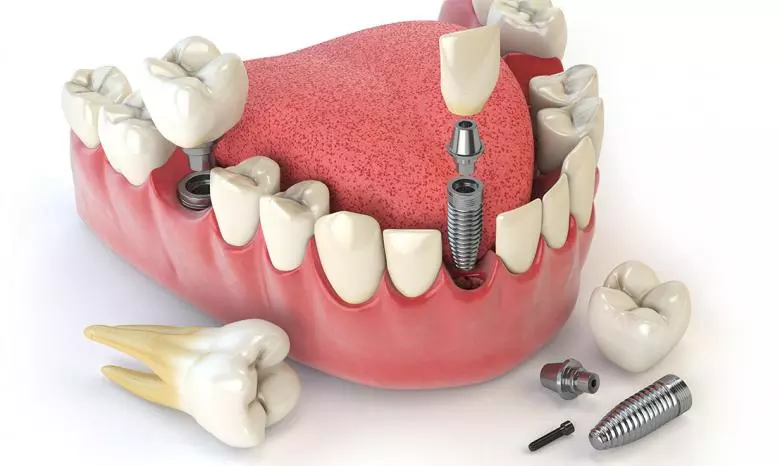Whatsapp: +90 (554) 160 5747 Online Appointment

Implantology (implant) is a branch of dentistry aimed at placing artificial tooth roots (made of titanium, ceramic, etc.) into the jawbone in patients who have one or more missing teeth, in order to build new teeth on these roots.
In certain cases, when patients have no teeth at all, implants can be used to provide support for dentures so they can be worn more comfortably. Implants are artificial tooth roots, typically made of titanium or titanium compounds, used to replace missing teeth in the mouth.
Implants are placed in the spaces left by previously lost teeth or immediately into the socket after a tooth extraction if there is no serious infection. The purpose of implant treatment is to create usable teeth on top of these implants. There is no aesthetic disadvantage with implants.
Advantages of Implants:
The density, height, and thickness of the bone in the area where the implant will be placed are crucial, as these factors directly affect the success of the implant. When there is insufficient bone, different techniques (using bone grafts) must be employed to increase the amount of bone. These procedures can include sinus lifts in the upper posterior region, block grafting, and horizontal or vertical bone augmentation in the lower jaw.
Is it possible for the body to reject an implant?
The body rejecting an implant is not really an issue; there are no known side effects or allergic reactions to implants in the human body. However, certain health conditions can make some patients unsuitable for implant treatment.
Situations where Implant Treatment is Risky:
In these groups, implant placement is risky and may fail. However, depending on the severity and degree of their condition, placing an implant could still be possible. The final decision belongs to the dentist, after consultation with the patient’s physician regarding systemic health.
Before implant treatment, it is very important to get a panoramic X-ray or, for more detail, a tomographic jaw X-ray. Three-dimensional imaging methods clearly show the condition of the jawbone, so tomographic images are used to determine whether the bone is suitable for implants and increase the likelihood of successful surgery. With current technology, implant placement is a straightforward procedure.
Surgical procedures are done under local anesthesia, meaning no pain is felt during the operation. First, the area is numbed with local anesthesia, and a socket is prepared where the missing tooth used to be in the jawbone. The implant is then placed into this socket. After the implant is placed, a screw that remains on the implant during the healing period is attached, and the healing period begins. For the dental implants to remain healthy under the pressures of chewing, they must fully integrate with the jawbone.
The duration of this integration varies depending on the type and location of the operation, the patient’s age, and overall health. After the operation, some time is required before the permanent prostheses can be made. If bone augmentation procedures were performed in areas of inadequate bone, the waiting period might be longer. Once the site has healed sufficiently, an impression is taken, and the planned prosthesis is fabricated. Implant treatment can be performed at any age after bone development is complete (around 18 years of age).
There is no specific age limit for implants. As long as there is no systemic issue preventing implant placement and the bone quality is sufficient, anyone can receive an implant.
Endodontics is the branch of dentistry that deals with the treatment of root…
A healthy and beautiful smile gives you an advantage in many areas of life. It…
Teeth lose their whiteness over time due to the consumption of certain foods,…